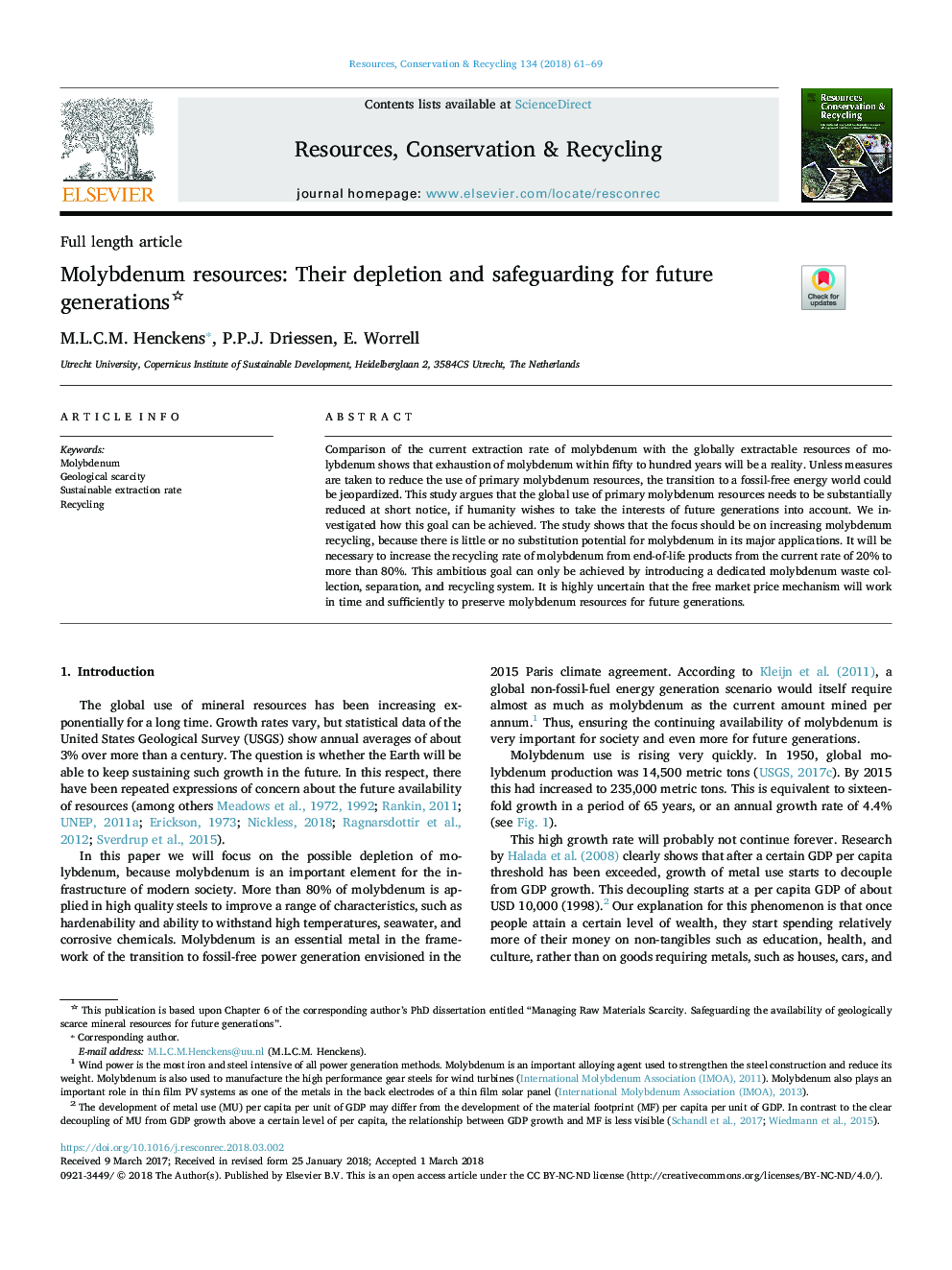| Article ID | Journal | Published Year | Pages | File Type |
|---|---|---|---|---|
| 7494139 | Resources, Conservation and Recycling | 2018 | 9 Pages |
Abstract
Comparison of the current extraction rate of molybdenum with the globally extractable resources of molybdenum shows that exhaustion of molybdenum within fifty to hundred years will be a reality. Unless measures are taken to reduce the use of primary molybdenum resources, the transition to a fossil-free energy world could be jeopardized. This study argues that the global use of primary molybdenum resources needs to be substantially reduced at short notice, if humanity wishes to take the interests of future generations into account. We investigated how this goal can be achieved. The study shows that the focus should be on increasing molybdenum recycling, because there is little or no substitution potential for molybdenum in its major applications. It will be necessary to increase the recycling rate of molybdenum from end-of-life products from the current rate of 20% to more than 80%. This ambitious goal can only be achieved by introducing a dedicated molybdenum waste collection, separation, and recycling system. It is highly uncertain that the free market price mechanism will work in time and sufficiently to preserve molybdenum resources for future generations.
Keywords
Related Topics
Physical Sciences and Engineering
Energy
Renewable Energy, Sustainability and the Environment
Authors
M.L.C.M. Henckens, P.P.J. Driessen, E. Worrell,
